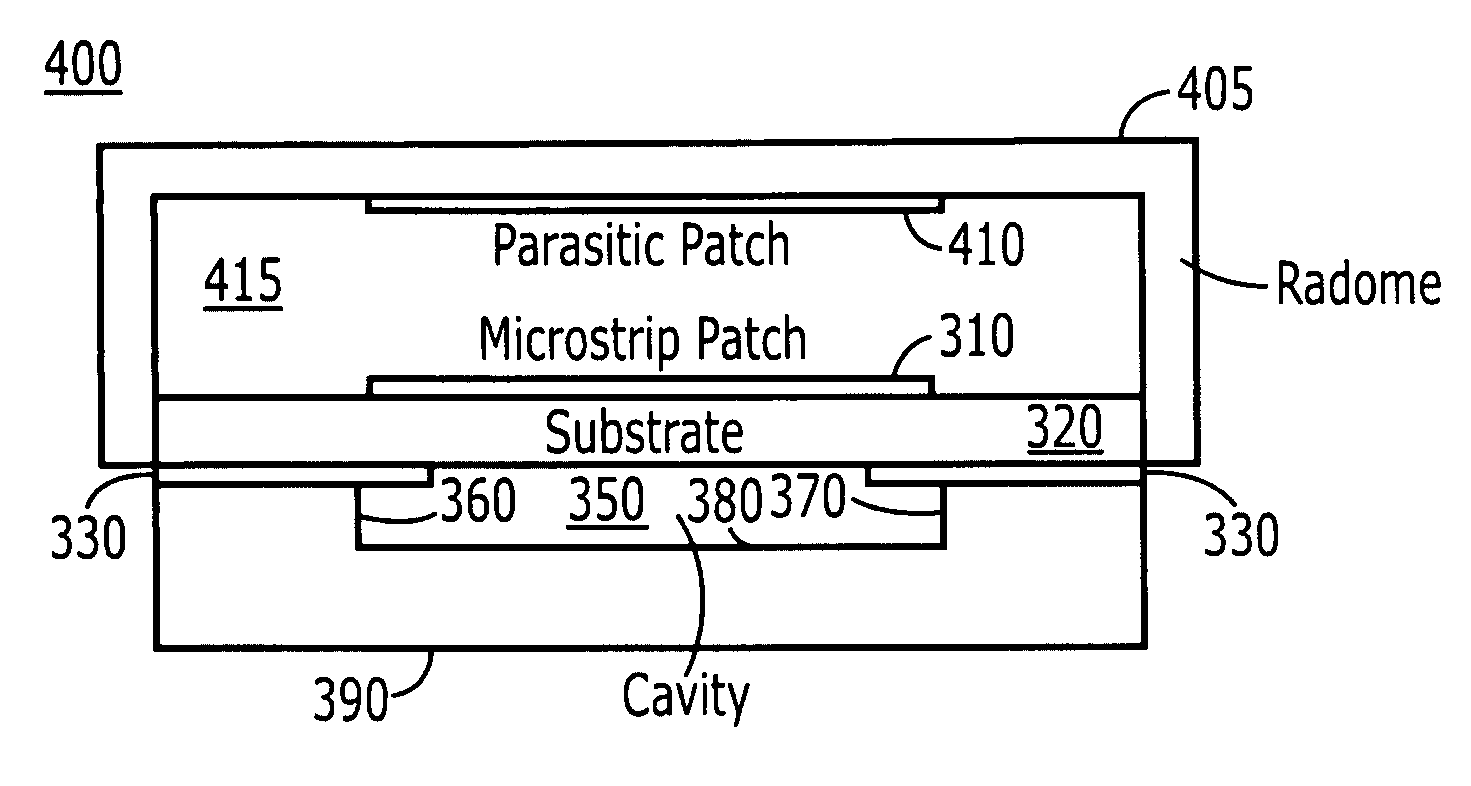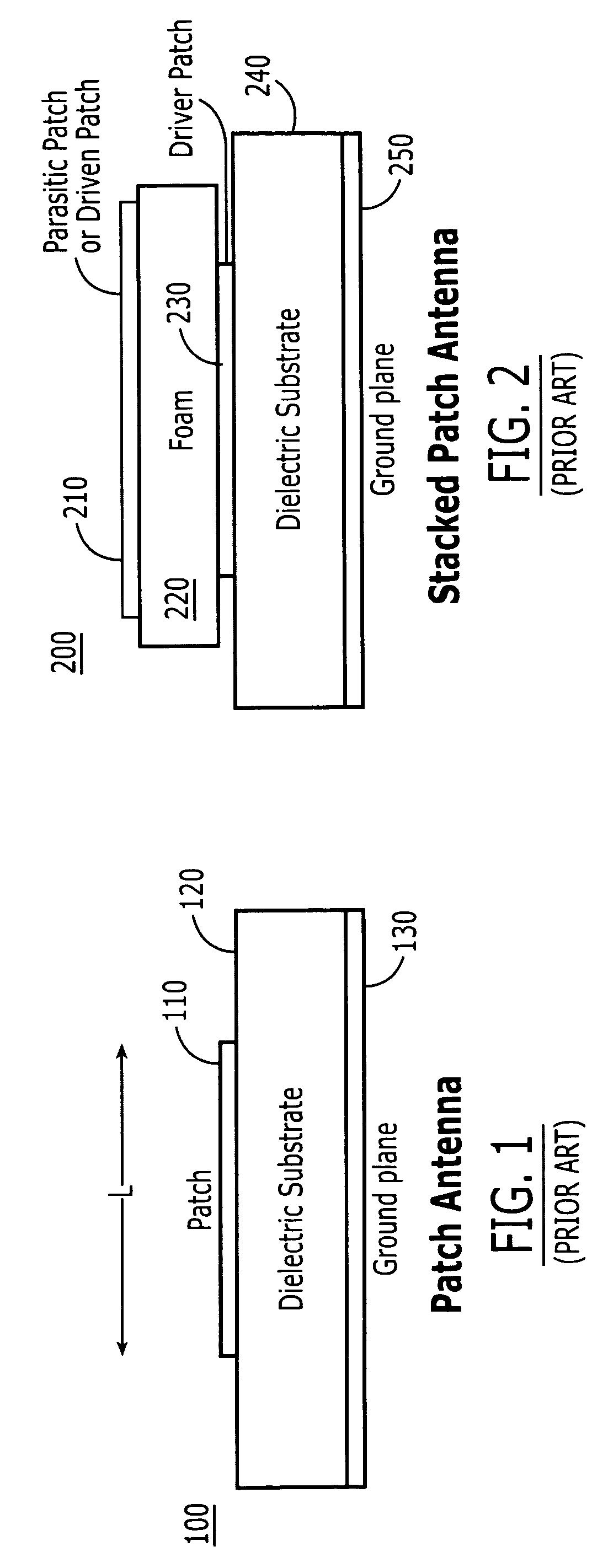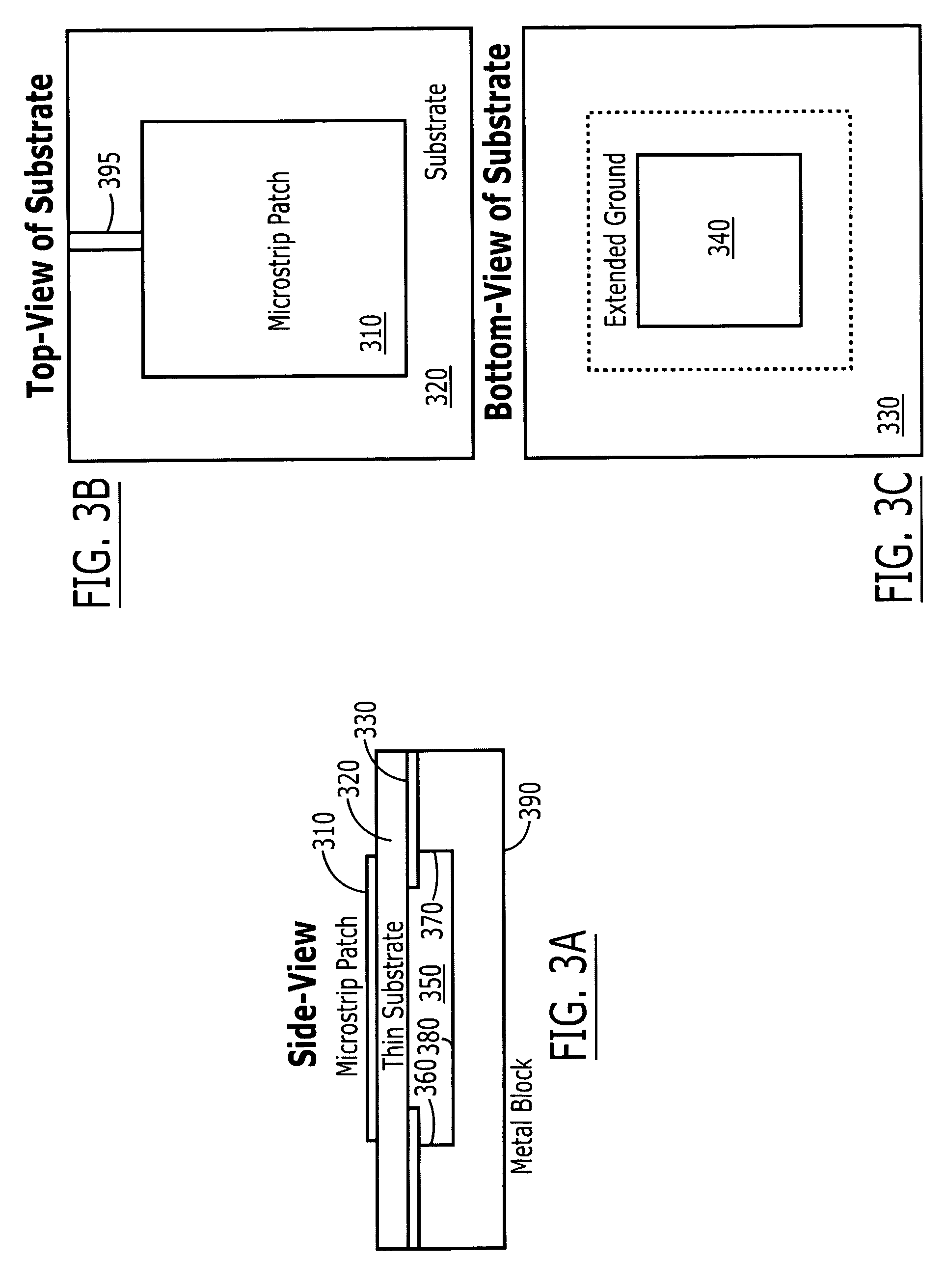Compact broadband patch antenna
a broadband patch and broadband technology, applied in the field of communication antennas, can solve the problems of reducing the difficulty in impedance matching, and typical odds, and achieve the effects of increasing the capacitive loading of the driver patch, enhancing the efficiency and bandwidth of the antenna element, and expanding the electromagnetic volume of the antenna elemen
- Summary
- Abstract
- Description
- Claims
- Application Information
AI Technical Summary
Benefits of technology
Problems solved by technology
Method used
Image
Examples
Embodiment Construction
[0023]Referring to FIGS. 3A, 3B, and 3C, an embodiment of the broadband patch antenna 300 is shown in a cross-sectional view (FIG. 3A), a top view (FIG. 3B) and a bottom view (FIG. 3C). The illustrated device comprises a base layer 390 having a cavity 350, a ground plane 330 having an opening 340 (shown in FIG. 3C), a dielectric substrate 320, and a driver patch 310. As in conventional patch antenna 100 described above, an input signal is preferably provided to the driver patch 310 via a microstrip line 395 (in FIG. 3B) and radiated outward by driver patch 310. Alternatively, the input signal may be provided via a coaxial probe feed passing upward through the base layer 390, cavity 350, and opening 340 to the driver patch 310.
[0024]The opening of the ground plane 330 may be larger than, coextensive with, or smaller than the cavity or the driver patch 310. Ground plane 330 is preferably extended beneath driver patch 310, such that at least a portion of the ground plane 330 overlaps t...
PUM
 Login to View More
Login to View More Abstract
Description
Claims
Application Information
 Login to View More
Login to View More - R&D
- Intellectual Property
- Life Sciences
- Materials
- Tech Scout
- Unparalleled Data Quality
- Higher Quality Content
- 60% Fewer Hallucinations
Browse by: Latest US Patents, China's latest patents, Technical Efficacy Thesaurus, Application Domain, Technology Topic, Popular Technical Reports.
© 2025 PatSnap. All rights reserved.Legal|Privacy policy|Modern Slavery Act Transparency Statement|Sitemap|About US| Contact US: help@patsnap.com



